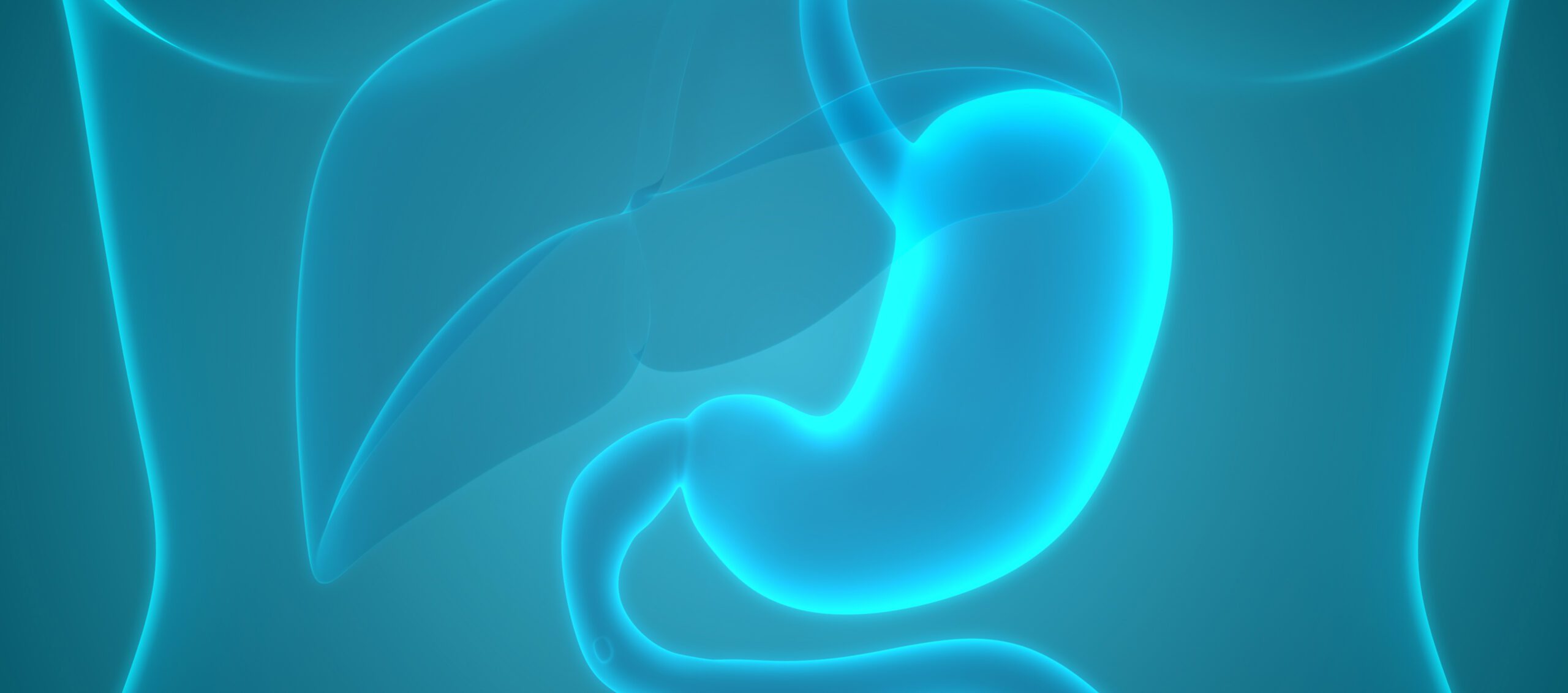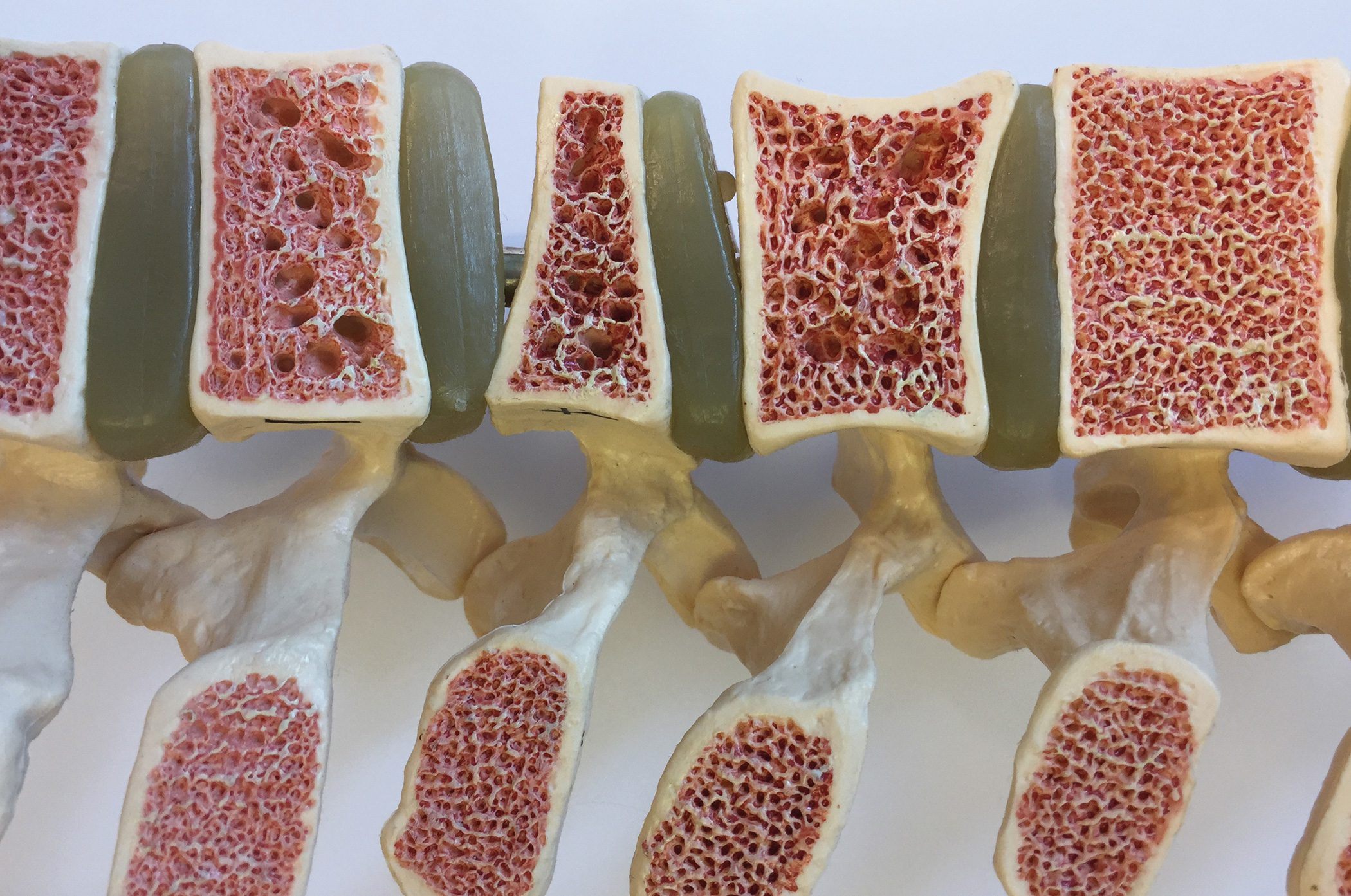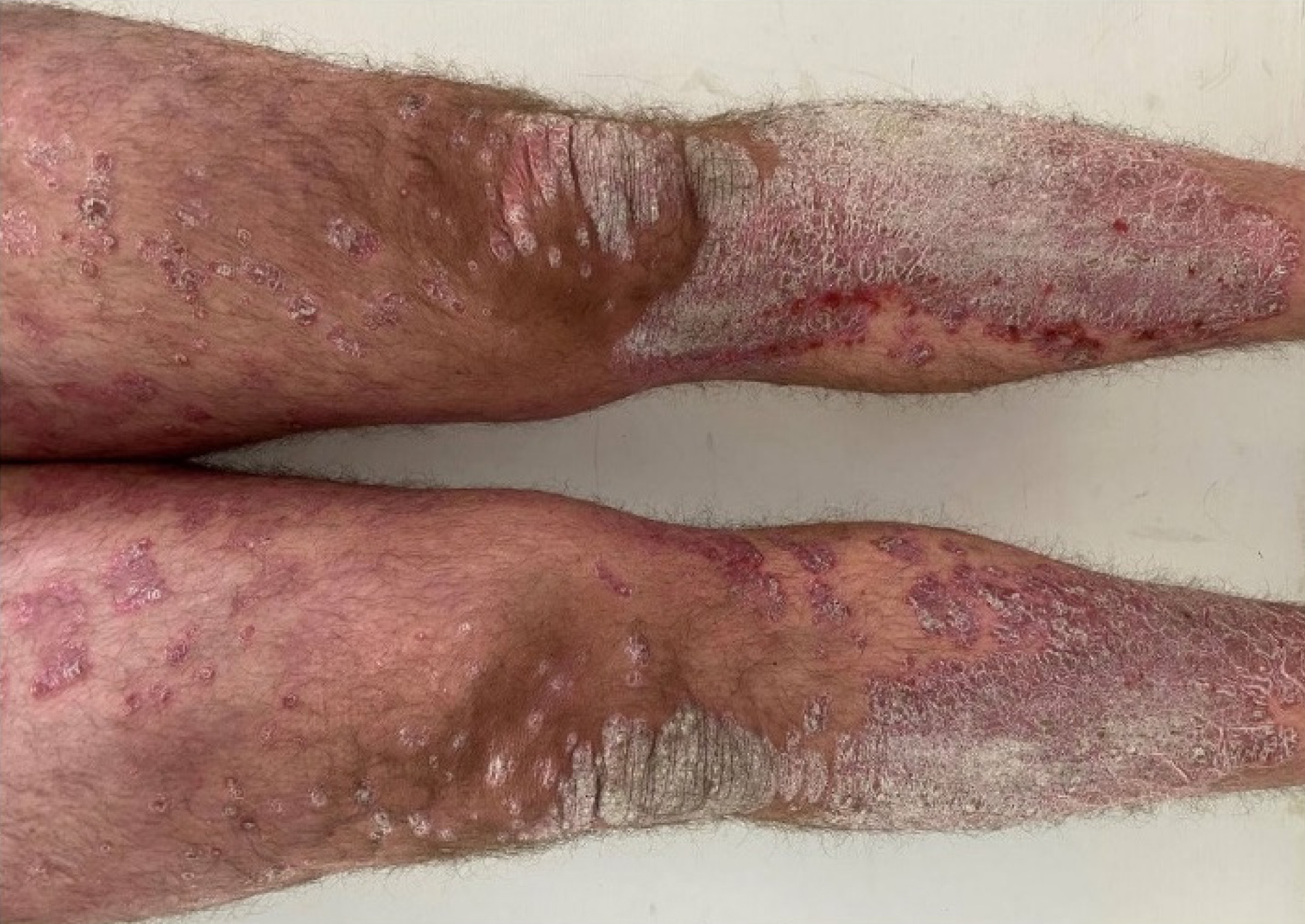Twenty percent of the population have elevated Lp(a) concentrations, which are associated with an increased risk of cardiovascular disease. There is currently no FDA or EMA approved pharmacologic therapy to lower elevated Lp(a) levels. The current lipid-lowering agents have little or no Lp(a)-lowering properties.
Elevated lipoprotein(a) [Lp(a)] in the blood, defined as a concentration ≥50 mg/dl, occurs in around 20% of people worldwide and is an often underestimated, genetic and independent risk factor for premature atherosclerotic cardiovascular disease (ASCVD) and aortic valve stenosis [1]. Structurally, Lp(a) is similar to low-density lipoprotein (LDL), but with the addition of the glycoprotein apolipoprotein(a) [apo(a)]. This has an evolutionary similarity to plasminogen and is bound to the apolipoprotein B-100 of the LDL particle. Although Lp(a) and LDL particles share the commonality of the apoB component, the LDL receptor does not appear to play a significant role in the clearance of Lp(a). The exact site and metabolic pathway of catabolism and elimination of Lp(a) are still unknown – but it is assumed that the kidney is involved in Lp(a) clearance [2].
Data from cohort studies, clinical studies, meta-analyses and genetic studies show a strong correlation between elevated Lp(a) and atherosclerotic cardiovascular disease (ASCVD).
Three large cohort studies, namely the Copenhagen City Heart Study (CCHS) [3], the Emerging Risk Factors Collaboration [4] and data from the UK Biobank [5] all showed an increase in the risk of ASCVD with increasing levels of Lp(a).
| Lp(a) concentration data |
| The units of measurement used in the article to indicate the Lp(a) concentration are those given in the corresponding study. |
| Conversion between the units of measurement (mg/dl, nmol/l) is only possible to a limited extent, but is acceptable for clinical purposes with a factor of 2.4 (1 mg/dl Lp(a) corresponds to approx. 2.4 nmol/l). |
Two large genetic studies also showed a possible causal relationship between Lp(a) and coronary heart disease (CHD). A case-control study from the Precocious Coronary Artery Disease (PROCARDIS) Cohort identified two LPA variants associated with elevated Lp(a) concentrations and an increased risk of CHD [6]. A classic Mendelian randomization study from Copenhagen, consisting of the CCHS, the Copenhagen General Population Study (CGPS) and the Copenhagen Ischemic Heart Disease Study (CIHDS), showed a 22% increase in the risk of myocardial infarction (MI) per doubling of the Lp(a) concentration [7].
A meta-analysis of three large clinical study populations with CHD patients, combined with data from other secondary prevention studies, showed that Lp(a) concentrations in the highest quantile were associated with a 40% higher risk of major adverse cardiovascular events (MACE) than in the lowest quantile [8]. In addition, several primary and secondary prevention studies have found a residual cardiovascular risk for Lp(a) that is independent of LDL-C [9–11].
Low Lp(a) concentrations due to loss-of-function mutations in the LPA gene, which is responsible for the synthesis of apolipoprotein(a), appear to offer protection against cardiovascular disease [12,13].
Furthermore, Lp(a) is the predominant carrier for oxidized phospholipids (oxPL) in the blood and thus represents a potential link in atherogenic processes. oxPL are proinflammatory mediators that contribute to endothelial dysfunction and plaque destabilization [14].
The studies presented suggest that lowering the concentration of Lp(a) would reduce the risk of ASCVD. However, this so-called Lp(a) hypothesis has not yet been proven by suitable clinical studies.
Currently available lipid-lowering therapies for elevated Lp(a)
Pharmacological therapies
The effects of statins on the Lp(a) concentration are very heterogeneous and range from no effect [15] to a slight reduction of approx. 15% [16] to a slight increase of approx. 15% [17,18]. The totality of the data indicates that statins have no significant effect on Lp(a) concentrations.
Ezetimibe [19], fibrates [20] and bempedoic acid [21] also have no effect on the Lp(a) concentration.
Although nicotinic acid (niacin) lowers Lp(a) concentrations by around 20% [22], it is no longer used due to the lack of clinical benefit in two outcome studies [23, 24].
Omega-3 fatty acids (ω-3FAs) have no effect on Lp(a) concentrations, but a pilot study in 12 patients with CHD and elevated Lp(a) (>50 mg/dl) showed a reduction in arterial inflammation with 3.6 g/d ω-3FAs over 12 weeks [25].
There is limited evidence for the effect of bile acid exchange resins on Lp(a), with one embedded case-control study showing an increase of 21% [26] and another small cross-over study of 19 patients showing no effect [27].
The monoclonal PCSK9 antibodies evolocumab [9] and alirocumab [28] both reduce Lp(a) concentrations by around 25%, but are not approved for this indication. The same applies to inclisiran, an siRNA-PCSK9 inhibitor, which lowers Lp(a) by around 20% [29].
Mipomersen, an antisense oligonucleotide (ASO) against apolipoprotein B (apoB), can reduce Lp(a) by around 25%, but is only approved in the USA and only for the indication of homozygous familial hypercholesterolemia (hoFH) [30].
Cholesterol ester transfer protein (CETP) inhibitors lower Lp(a) [31], most likely by reducing the production rate of apolipoprotein(a) [apo(a)] [32]. However, there is currently no CETP inhibitor approved for any indication. Obicetrapib, a new CETP inhibitor currently in phase 3 clinical development, can reduce Lp(a) by up to 56% [33].
Lomitapide, an inhibitor of the microsomal triglyceride transfer protein (MTP) [34] and evinacumab, an antibody against angiopoietin-like protein 3 (ANGPTL3) [35], which are both approved for the treatment of HoFH, cause a slight reduction in Lp(a) of 13% and 5.5% respectively.
Apheresis
Lipoprotein apheresis is very effective in temporarily lowering Lp(a) (acute reduction by 60 to 85%, permanent reduction by 25 to 40% [1]) and in lowering LDL concentrations by 60 to 85%. Specific Lp(a) apheresis is the only method that selectively removes Lp(a), but it is only available in Russia, where it was developed [36].
Apheresis therapy is impractical and requires weekly or biweekly sessions lasting two to three hours throughout life [37]. It is also limited by the number of centers equipped to perform the treatment, is associated with risks such as bleeding due to heparin administration and arteriovenous fistula complications, and is costly [1].
Most importantly, despite some small studies suggesting clinical benefit [38,39], there are still no rigorously designed definitive studies demonstrating a reduction in the incidence of myocardial infarction in patients with high Lp(a) by apheresis [37,40,41].
Novel therapies for elevated Lp(a)
Antisense oligonucleotides (ASO)
Pelacarsen (TQJ230): Pelacarsen is an antisense oligonucleotide (ASO) that targets the messenger RNA (mRNA) product of the LPA gene. It utilizes ligand-conjugated antisense (LICA) technology and is covalently bound to a sugar molecule, the triantennary N-acetylgalactosamine (tri-GalNAc) complex, which enables rapid and selective uptake by the asialoglycoprotein receptor (ASGPR) on the cell membrane of hepatocytes [42]. All ASOs are single-stranded nucleic acid sequences that bind to the complementary target RNA via Watson-Crick base pairing and mediate its selective destruction by activating RNAase-H [43]. This reduces protein production. Pelacarsen is then released and can search for another apo(a) mRNA (Fig. 1).
In phase 1/2a studies, pelacarsen was found to reduce Lp(a) levels by 26.2% to 85.3% in single-dose groups after 30 days. In groups with multiple doses, the reduction was 66 to 92% [44]. In addition, significant reductions in oxPL-apoB, oxPL-apo(a), LDL-C and apoB-100 were observed. A Phase 2 dose-finding study showed a dose-dependent reduction in Lp(a) in patients with ASCVD and elevated Lp(a), defined as ≥60 mg/dl (150 nmol/l). After 6 months of treatment, the average reduction was between 35 and 80%. The strongest reduction was observed at the highest dose of 20 mg s.c. weekly. In contrast, an increase of 6% was recorded in the placebo group. The effects became apparent from week 4 and reached almost maximum levels after 16 weeks. The proinflammatory oxidized phospholipids on apoB and apo(a) were also reduced by up to 88 and 70%, respectively. Although LDL-C and apoB concentrations were also slightly reduced, it was later shown that this reduction was mainly due to a decrease in Lp(a)-C or Lp(a)-apoB. The non-Lp(a)-apoB was not significantly affected [45].
To date, the most commonly reported adverse events (AEs) are local injection site reactions (ISR), myalgias, arthralgias, post-injection discomfort, urinary tract infections and headache [46]. 27% of patients experienced ISR, compared to 7% in the placebo group.
A phase 3 cardiovascular outcome trial (CVOT) (Lp(a) HORIZON, NCT04023552) evaluating the effect of pelacarsen 80 mg once monthly on major cardiovascular events in 8323 patients with ASCVD (post MI, ischemic stroke or peripheral arterial disease) and Lp(a) ≥70 mg/dl is currently ongoing and is expected to be completed in mid-2025 [47].
Small-interfering RNAs (siRNAs)
Olpasiran (AMG890): Olpasiran is a GalNAc-conjugated small-interfering RNA (siRNA) targeting the mRNA product of the LPA gene. siRNAs are double-stranded molecules that destroy the targeted mRNA via the RNA-induced silencing complex (RISC). Olpasiran enters the cell via an endosomal mechanism, whereupon it enters the cytosol and the ASGPR (see above) returns to the cell surface. Once inside the cell, the two RNA strands are split into a non-matrix strand (sense strand) and a matrix strand (antisense strand) by the action of Argonaut 2 (AGO2), and the matrix strand is incorporated into the RISC ready to exert mRNA-degrading activity. The non-matrix strand is degraded and the matrix strand rebinds to its mRNA target by Watson-Crick base pairing [43]. This binding induces cleavage of the target mRNA by AGO2 and degradation by exonucleases, which ultimately leads to reduced synthesis of apo(a) (Fig. 2) .
In a phase 1 study, single doses of olpasiran were well tolerated and a reduction in Lp(a) of 71 to 97% was maintained for several months after administration [48].
A Phase 2 dose-finding study with olpasiran showed a dose-dependent reduction in Lp(a) in 281 patients with ASCVD and elevated Lp(a) concentrations, defined as ≥150 nmol/l. The OCEAN(a)-DOSE study was an international randomized, double-blind, placebo-controlled study [49]. Participants were randomized to a placebo group or to four different olpasiran dose groups: 10, 75 or 225 mg every 12 weeks until week 36 or 225 mg every 24 weeks until week 48. The treatment period was 48 weeks. The primary endpoint was the placebo-corrected percentage change in Lp(a) after 36 weeks. The mean placebo-corrected reductions ranged from 71 to 101%. Specifically, they amounted to -70.5% with the 10 mg dose, -97.4% with the 75 mg dose, -101.1% with the 225 mg dose and -100.5% with the 225 mg dose every 24 weeks. The almost maximum effects were already observed in week 4. There was also a moderate reduction in LDL-C (up to 24.8%) and apoB (up to 18.9%), both placebo-corrected [49]. The most common adverse effects were ISR, primary pain and hypersensitivity reactions with local skin reactions. ISR occurred in 17% of patients compared to 11% in the placebo group.
The data from the study extension were presented at the annual meeting of the European Society of Cardiology (ESC) 2023 in Amsterdam [50]. The effects of olpasiran on oxPL-apoB, the extended safety profile and the effect of olpasiran on Lp(a) concentrations beyond the last dose were investigated. A median of 276 patients were observed for 86 weeks; 88% were already taking a statin, 52% ezetimibe and 24% a PCSK9 inhibitor. The mean initial value for LDL-C was 67.7 mg/dl, for Lp(a) 261 nmol/l and for oxPL-apoB 26.5 nmol/l. A dose-dependent reduction of oxPL-apoB was confirmed. The dose of 75 mg every 12 weeks showed a placebo-adjusted change in oxPL-apoB concentrations of -89.7% and -100.2% after 36 weeks and 48 weeks of follow-up, respectively. The dose of 225 mg every 12 weeks showed a change of -92.3% and -104.7% after 36 weeks and 48 weeks respectively. At a follow-up of almost 1 year after the last dose administered (week 36), there was a sustained reduction in Lp(a) levels of 40-50% for doses ≥75 mg every 12 weeks of olpasiran. Patients who received the exploratory dose of 225 mg every 24 weeks also showed a sustained improvement in Lp(a) levels, which gradually returned to baseline at a follow-up period of almost one year after the last dose administered.
In terms of safety, the incidence of treatment-related adverse events such as liver-related AEs, myalgias and new-onset or worsening diabetes mellitus was comparable to placebo and consistent across all doses. The only AEs were local hypersensitivity reactions and reactions at the injection site [50].
A phase 3 cardiovascular outcome trial (CVOT) (OCEAN(a), NCT05581303) is currently being conducted and is expected to be completed in December 2026 [51]. The study investigates the influence of olpasiran on serious cardiovascular events in 6000 patients with an Lp(a) ≥200 nmol/l and with a history of myocardial infarction and/or coronary revascularization with percutaneous coronary intervention (PCI) and at least one additional risk factor.
Zerlasiran (SLN360): SNL360 is a chemically stabilized, double-stranded 19-mer siRNA whose preclinical study has recently been described in detail [52,53]. The APOLLO study, conducted in five centers in the US, UK and Australia, was a single ascending dose, double-blind, placebo-controlled study evaluating the efficacy and safety of zerlasiran (SLN360) in patients with CVD and elevated Lp(a) levels, defined as Lp(a) ≥150 nmol/l [54]. The primary endpoint was the reduction in Lp(a) after 150 days. Secondary endpoints were changes in LDL-C, apoB, oxidized LDL, inflammatory markers and plasminogen. The patients were divided into four cohorts of eight participants each (two each received placebo and six each received a single dose of either 30, 100, 300 or 600 mg SLN360). AEs were mild and consisted predominantly of headache and injection site reactions; self-limiting elevated neutrophil counts and elevated C-reactive protein levels were observed in a few patients. One participant who received the lowest dose experienced two serious AEs (sAEs). They were considered unrelated to the study (headache after SARS-CoV-2 vaccination and later complications of cholecystitis).
Almost complete elimination of Lp(a) was observed in a dose-dependent manner, with Lp(a) reduction of 98% and 96% at the two highest SNL360 doses. LDL-C was also reduced by 21% and 26% with the two highest doses, as was apoB.
A randomized, double-blind, placebo-controlled, dose-finding Phase 2 study to evaluate the efficacy, safety and tolerability of zerlasiran in 160 participants at high risk for ASCVD events with elevated Lp(a), defined as Lp(a) ≥125 nmol/l, is expected to be completed in early 2024.
Lepodisiran (LY3819469): Lepodisiran is the third siRNA in clinical development for the treatment of elevated Lp(a). Recently, the results of a single ascending dose study conducted at five clinical centers in the US and Singapore, involving 48 adults in primary cardiovascular prevention and with elevated Lp(a) concentrations, defined as ≥75 nmol/l (or ≥30 mg/dl), were published [55].
48 participants were randomized to receive placebo or a single subcutaneous dose of lepodisiran (4, 12, 32, 96, 304 or 608 mg). The primary endpoint was safety and tolerability and secondary endpoints included changes in Lp(a) levels during a maximum follow-up period of 48 weeks.
There was one sAE, a facial injury following a fall from a bicycle, which occurred 141 days after injection of the lowest dose. The other AEs were rare and generally similar in all lepodisiran dose groups and the placebo group.
Lepodisiran reached maximum plasma concentrations within 10.5 hours and was no longer detectable after 48 hours. The Lp(a) concentrations decreased in a dose-dependent manner. The maximum median change in Lp(a) concentration from baseline was -5% in the placebo group, -41% in the 4-mg group, -59% in the 12-mg group, -76% in the 32-mg group, -90% in the 96-mg group, -96% in the 304-mg group and -97% in the 608-mg group. Even on day 337, the median change in Lp(a) concentration at the highest dose was -94%.
A phase 2 dose-finding study with 254 patients with ASCVD and Lp(a) ≥175 nmol/l has completed the recruitment phase and is expected to be completed in November 2024 (NCT05565742) [56]. A phase 3 CVOT study [ACCLAIM-Lp(a)] is expected to begin in 2024.
Table 1 summarizes the efficacy and ISR profile of the above-mentioned RNA-based therapeutics for lowering Lp(a).
Small molecule Lp(a) formation inhibitors
Muvalaplin (LY3473329): While Lp(a) is formed via covalent binding of apo(a) to an apoB-100 protein on an LDL-like particle, initial non-covalent binding of apo(a) kringle IV domains 7 and 8 to lysine residues of apoB-100 in the hepatocyte and Disse’s space is required. This initial non-covalent bond is then followed by the formation of the covalent disulfide bond. Muvalapline is a small molecule Lp(a) inhibitor that prevents the initial non-covalent interaction between apo(a) and apoB-100, thereby inhibiting the disulfide bond and thus the synthesis of Lp(a) (Fig. 3). Muvalapline is the first orally active agent specifically developed to lower Lp(a).
A randomized, double-blind, placebo-controlled phase 1 study was recently published, which mainly investigated the safety and tolerability of muvalapline in healthy volunteers [57]. There was a single ascending dose (SAD) group in which the effect of a single dose of muvalapline from 1 to 800 mg or placebo was studied in 55 participants with a median Lp(a) of 10.3 mg/dl. For the multiple ascending dose (MAD) part of the study, 59 participants with an Lp(a) of ≥30 mg/dl (median Lp(a) 58.3 mg/dl) were recruited and the effect of daily oral intake of muvalapline (30 to 800 mg) or placebo over 14 days was investigated.
Most AEs associated with the treatment were mild and transient. The most common side effects were headaches, back pain, diarrhea, abdominal pain, nausea and fatigue.
Muvalapline lowered Lp(a) concentrations within 24 hours of the first dose and repeated dosing resulted in a further reduction. The placebo-corrected Lp(a) reduction was up to 65% at doses of 100 mg or more. There were no significant changes in total cholesterol, HDL-C, LDL-C, triglycerides or apoB compared to placebo. No significant reduction in plasminogen activity was observed.
A Phase 2 dose-finding study of muvalapline (NCT05563246) in 233 adult participants with elevated Lp(a), defined as Lp(a) ≥175 nmol/l (approx. 70 mg/dl), who are at high risk of cardiovascular disease, is currently recruiting and is expected to be completed in January 2024 [58].
Gene editing
CRISPR-Cas9: CRISPR Therapeutics has developed the new gene therapy CTX320, which uses lipid nanoparticles (LNP) to deliver Cas9 mRNA and a guide RNA (gRNA) to the liver in vivo. In a poster presentation at the annual meeting of the American Heart Association in November 2023 in Philadelphia, it was shown that a single administration of CTX320 in four non-human primates reduces Lp(a) by up to 95%. The reduction was permanent for more than a year after treatment.
CTX320 was well tolerated and only led to a temporary increase in liver enzymes, which resolved without intervention. No changes above the limit of detection (0.012%) were observed in most extrahepatic tissues and no AEs associated with extrahepatic changes occurred. A phase 1 trial with CTX320 in patients with elevated Lp(a) and cardiovascular disease is scheduled to begin in 2024.
Other: In addition, Verve Therapeutics, in collaboration with Lilly, is investigating the potential development of a novel editor to deactivate LPA and reduce Lp(a) levels. This research is at a very early stage before it can enter the integrated drug development phase.
Conclusions
Elevated Lp(a) is a common genetic risk factor for cardiovascular disease and aortic valve stenosis, but to date there is no approved specific pharmacotherapy that could significantly reduce Lp(a) levels. There are currently a number of promising siRNAs and an ASO that significantly reduce the Lp(a) concentration. Two of these, pelacarsen and olpasiran, are already in phase 3 clinical development and are currently being tested in CVOT studies. The results of these studies, which are expected in the next few years, are eagerly awaited. This could finally either confirm or refute the Lp(a) hypothesis, which has been unanswered for years.
Take-Home-Messages
- Twenty percent of the population have elevated Lp(a) concentrations, which are associated with an increased risk of cardiovascular disease.
- There is currently no FDA or EMA approved pharmacologic therapy to lower elevated Lp(a) levels. The current lipid-lowering drugs have little or no Lp(a)-lowering properties.
- Potentially promising pharmacological therapies in clinical development include Lp(a) synthesis inhibitors such as the ASO pelacarsen and the three siRNAs olpasiran, zerlasiran and lepodisiran, as well as the orally administered small-molecule drug muvalaplin, which inhibits the formation of Lp(a). New gene technologies (genome editing, CRISPR/Cas “gene scissors”) are at an earlier stage of development.
- The CVOT studies with pelacarsen and olpasiran, the results of which are expected in the next few years, will prove or disprove the long-discussed Lp(a) hypothesis, i.e. whether a reduction in Lp(a) concentration leads to a decrease in the rate of cardiovascular events.
Potential conflicts of interest
- I. Gouni-Berthold has received personal consulting fees from Amgen, Regeneron, Aegerion, Akcea Therapeutics, Daiichi-Sankyo, Novartis, Sanofi and Amarin.
- J.M. Zimodro has no conflicts of interest to declare.
- H.K. Berthold has no conflicts of interest to declare.
Literature:
- Alhomoud IS, Talasaz A, Mehta A, et al: Role of lipoprotein(a) in atherosclerotic cardiovascular disease: A review of current and emerging therapies. Pharmacotherapy 2023; 43(10): 1051-1063, doi: 10.1002/phar.2851, indexed in Pubmed: 37464942.
- Koschinsky ML, Stroes ESG, Kronenberg F: Daring to dream: Targeting lipoprotein(a) as a causal and risk-enhancing factor. Pharmacol Res 2023; doi:10.1016/j.phrs.2023.106843, indexed in Pubmed: 37406784.
- Kamstrup PR, Benn M, Tybjaerg-Hansen A, et al: Extreme lipoprotein(a) levels and risk of myocardial infarction in the general population: the Copenhagen City Heart Study. Circulation 2008; 117(2): 176-184, doi:10.1161/CIRCULATIONAHA.107.715698, indexed in Pubmed: 18086931.
- Emerging Risk Factors C, Erqou S, Kaptoge S, et al: Lipoprotein(a) concentration and the risk of coronary heart disease, stroke, and nonvascular mortality. JAMA 2009; 302(4): 412-423,
doi:10.1001/jama.2009.1063, indexed in Pubmed: 19622820. - Patel AP, Wang M, Pirruccello JP, et al: Lp(a) (Lipoprotein[a]) Concentrations and Incident Atherosclerotic Cardiovascular Disease: New Insights From a Large National Biobank. Arterioscler Thromb Vasc Biol 2021; 41(1): 465-474,
doi: 10.1161/ATVBAHA.120.315291, indexed in Pubmed: 33115266. - Clarke R, Peden JF, Hopewell JC, et al: Genetic variants associated with Lp(a) lipoprotein level and coronary disease. N Engl J Med 2009; 361(26): 2518-2528, doi:10.1056/NEJMoa0902604, indexed in Pubmed: 20032323.
- Kamstrup PR, Tybjaerg-Hansen A, Steffensen R, et al: Genetically elevated lipoprotein(a) and increased risk of myocardial infarction. JAMA 2009; 301(22): 2331-2339,doi:10.1001/jama.2009.801, indexed in Pubmed: 19509380.
- O’Donoghue ML, Morrow DA, Tsimikas S, et al: Lipoprotein(a) for risk assessment in patients with established coronary artery disease. J Am Coll Cardiol 2014; 63(6): 520-527, doi:10.1016/j.jacc.2013.09.042, indexed in Pubmed: 24161323.
- O’Donoghue ML, Fazio S, Giugliano RP, et al: Lipoprotein(a), PCSK9 Inhibition, and Cardiovascular Risk. Circulation 2019; 139(12): 1483-1492, doi:10.1161/CIRCULATIONAHA.118.037184, indexed in Pubmed: 30586750.
- Albers JJ, Slee A, O’Brien KD, et al: Relationship of apolipoproteins A-1 and B, and lipoprotein(a) to cardiovascular outcomes: the AIM-HIGH trial (Atherothrombosis Intervention in Metabolic Syndrome with Low HDL/High Triglyceride and Impact on Global Health Outcomes). J Am Coll Cardiol 2013; 62(17): 1575-1579, doi:10.1016/j.jacc.2013.06.051, indexed in Pubmed: 23973688.
- Khera AV, Everett BM, Caulfield MP, et al: Lipoprotein(a) concentrations, rosuvastatin therapy, and residual vascular risk: an analysis from the JUPITER Trial (Justification for the Use of Statins in Prevention: an Intervention Trial Evaluating Rosuvastatin). Circulation 2014; 129(6): 635-642,
doi:10.1161/CIRCULATIONAHA.113.004406, indexed in Pubmed: 24243886. - Kyriakou T, Seedorf U, Goel A, et al: A common LPA null allele associates with lower lipoprotein(a) levels and coronary artery disease risk. Arterioscler Thromb Vasc Biol 2014; 34(9): 2095-2099, doi: 10.1161/ATVBAHA.114.303462, indexed in Pubmed: 24925971.
- Lim ET, Wurtz P, Havulinna AS, et al: Distribution and medical impact of loss-of-function variants in the Finnish founder population. PLoS Genet 2014; 10(7): e1004494, doi: 10.1371/journal.pgen.1004494, indexed in Pubmed: 25078778.
- Tsimikas S, Witztum JL: Oxidized phospholipids in cardiovascular disease. Nat Rev Cardiol 2023. doi: 10.1038/s41569-023-00937-4, indexed in Pubmed: 37848630.
- Willeit P, Ridker PM, Nestel PJ, et al: Baseline and on-statin treatment lipoprotein(a) levels for prediction of cardiovascular events: individual patient-data meta-analysis of statin outcome trials. Lancet 2018; 392(10155): 1311-1320, doi: 10.1016/S0140-6736(18)31652-0, indexed in Pubmed: 30293769.
- Deshmukh HA, Colhoun HM, Johnson T, et al: Genome-wide association study of genetic determinants of LDL-c response to atorvastatin therapy: importance of Lp(a). J Lipid Res 2012; 53(5): 1000-1011, doi: 10.1194/jlr.P021113, indexed in Pubmed: 22368281.
- Berg K, Dahlen G, Christophersen B, et al: Lp(a) lipoprotein level predicts survival and major coronary events in the Scandinavian Simvastatin Survival Study. Clin Genet 1997; 52(5): 254-261, doi: 10.1111/j.1399-0004.1997.tb04342.x, indexed in Pubmed: 9520115.
- Tsimikas S, Gordts P, Nora C, et al: Statin therapy increases lipoprotein(a) levels. Eur Heart J 2020; 41(24): 2275-2284, doi:10.1093/eurheartj/ehz310, indexed in Pubmed: 31111151.
- Sahebkar A, Simental-Mendia LE, Pirro M, et al: Impact of ezetimibe on plasma lipoprotein(a) concentrations as monotherapy or in combination with statins: a systematic review and meta-analysis of randomized controlled trials. Sci Rep 2018; 8(1): 17887, doi: 10.1038/s41598-018-36204-7, indexed in Pubmed: 30552391.
- Sahebkar A, Simental-Mendia LE, Watts GF, et al: Comparison of the effects of fibrates versus statins on plasma lipoprotein(a) concentrations: a systematic review and meta-analysis of head-to-head randomized controlled trials. BMC Med 2017; 15(1): 22, doi:10.1186/s12916-017-0787-7, indexed in Pubmed: 28153024.
- Thompson PD, Rubino J, Janik MJ, et al: Use of ETC-1002 to treat hypercholesterolemia in patients with statin intolerance. J Clin Lipidol 2015; 9(3): 295-304, doi:10.1016/j.jacl.2015.03.003, indexed in Pubmed: 26073387.
- Sahebkar A, Reiner Z, Simental-Mendia LE, et al: Effect of extended-release niacin on plasma lipoprotein(a) levels: A systematic review and meta-analysis of randomized placebo-controlled trials. Metabolism 2016; 65(11): 1664-1678, doi:10.1016/j.metabol.2016.08.007, indexed in Pubmed: 27733255.
- Investigators A-H, Boden WE, Probstfield JL, et al: Niacin in patients with low HDL cholesterol levels receiving intensive statin therapy. N Engl J Med 2011; 365(24): 2255-2267, doi: 10.1056/NEJMoa1107579, indexed in Pubmed: 22085343.
- Group HTC, Landray MJ, Haynes R, et al: Effects of extended-release niacin with laropiprant in high-risk patients. N Engl J Med 2014; 371(3): 203-212, doi: 10.1056/NEJMoa1300955, indexed in Pubmed: 25014686.
- Ward NC, Ying Q, Chan DC, et al: Improved arterial inflammation with high dose omega-3 fatty acids in patients with elevated lipoprotein(a): Selective effect of eicosapentaenoic acid? J Clin Lipidol 2023; 17(5): 694-699, doi: 10.1016/j.jacl.2023.08.004, indexed in Pubmed: 37598001.
- Schaefer EJ, Lamon-Fava S, Jenner JL, et al: Lipoprotein(a) levels and risk of coronary heart disease in men. The lipid Research Clinics Coronary Primary Prevention Trial. JAMA 1994; 271(13): 999-1003, doi: 10.1001/jama.1994.03510370051031, indexed in Pubmed: 8139085.
- Vessby B, Kostner G, Lithell H, et al: Diverging effects of cholestyramine on apolipoprotein B and lipoprotein Lp(a). A dose-response study of the effects of cholestyramine in hypercholesterolaemia. Atherosclerosis 1982; 44(1): 61-71, doi:10.1016/0021-9150(82)90053-3, indexed in Pubmed: 6214264.
- Ray KK, Vallejo-Vaz AJ, Ginsberg HN, et al: Lipoprotein(a) reductions from PCSK9 inhibition and major adverse cardiovascular events: Pooled analysis of alirocumab phase 3 trials. Atherosclerosis 2019; 288194-202, doi:10.1016/j.atherosclerosis.2019.06.896, indexed in Pubmed: 31253441.
- Katsiki N, Vrablik M, Banach M, et al: Inclisiran, low-density lipoprotein cholesterol and lipoprotein (a). Pharmaceuticals (Basel) 2023; 16(4), doi:10.3390/ph16040577, indexed in Pubmed: 37111334.
- Santos RD, Raal FJ, Catapano AL, et al: Mipomersen, an antisense oligonucleotide to apolipoprotein B-100, reduces lipoprotein(a) in various populations with hypercholesterolemia: results of 4 phase III trials. Arterioscler Thromb Vasc Biol 2015; 35(3): 689-699, doi: 10.1161/ATVBAHA.114.304549, indexed in Pubmed: 25614280.
- Nicholls SJ, Ruotolo G, Brewer HB, et al: Evacetrapib alone or in combination with statins lowers lipoprotein(a) and total and small LDL particle concentrations in mildly hypercholesterolemic patients. J Clin Lipidol 2016; 10(3): 519-527 e514, doi: 10.1016/j.jacl.2015.11.014, indexed in Pubmed: 27206939.
- Thomas T, Zhou H, Karmally W, et al: CETP (Cholesteryl Ester Transfer Protein) Inhibition With Anacetrapib Decreases Production of Lipoprotein(a) in Mildly Hypercholesterolemic Subjects. Arterioscler Thromb Vasc Biol 2017; 37(9): 1770-1775, doi: 10.1161/ATVBAHA.117.309549, indexed in Pubmed: 28729361.
- Nicholls SJ, Ditmarsch M, Kastelein JJ, et al: Lipid lowering effects of the CETP inhibitor obicetrapib in combination with high-intensity statins: a randomized phase 2 trial. Nat Med 2022; 28(8): 1672-1678, doi: 10.1038/s41591-022-01936-7, indexed in Pubmed: 35953719.
- Cuchel M, Meagher EA, du Toit Theron H, et al: Efficacy and safety of a microsomal triglyceride transfer protein inhibitor in patients with homozygous familial hypercholesterolaemia: a single-arm, open-label, phase 3 study. Lancet 2013; 381(9860): 40-46, doi: 10.1016/S0140-6736(12)61731-0, indexed in Pubmed: 23122768.
- Raal FJ, Rosenson RS, Reeskamp LF, et al: Evinacumab for Homozygous Familial Hypercholesterolemia. N Engl J Med 2020; 383(8): 711-720, doi:10.1056/NEJMoa2004215, indexed in Pubmed: 32813947.
- Pokrovsky SN, Afanasieva OI, Safarova MS, et al: Specific Lp(a) apheresis: A tool to prove lipoprotein(a) atherogenicity. Atheroscler Suppl 2017; 30166-30173, doi:10.1016/j.atherosclerosissup.2017.05.004, indexed in Pubmed: 29096833.
- Reyes-Soffer G, Ginsberg HN, Berglund L, et al: Lipoprotein(a): A Genetically Determined, Causal, and Prevalent Risk Factor for Atherosclerotic Cardiovascular Disease: A Scientific Statement From the American Heart Association. Arterioscler Thromb Vasc Biol 2022; 42(1): e48-e60, doi:10.1161/ATV.0000000000000147, indexed in Pubmed: 34647487.
- Khan TZ, Hsu LY, Arai AE, et al: Apheresis as novel treatment for refractory angina with raised lipoprotein(a): a randomized controlled cross-over trial. Eur Heart J 2017; 38(20): 1561-1569, doi:10.1093/eurheartj/ehx178, indexed in Pubmed: 28453721.
- Roeseler E, Julius U, Heigl F, et al: Lipoprotein Apheresis for Lipoprotein(a)-Associated Cardiovascular Disease: Prospective 5 Years of Follow-Up and Apolipoprotein(a) Characterization. Arterioscler Thromb Vasc Biol 2016; 36(9): 2019-2027, doi: 10.1161/ATVBAHA.116.307983, indexed in Pubmed: 27417585.
- 40 Kronenberg F, Mora S, Stroes ESG, et al: Lipoprotein(a) in atherosclerotic cardiovascular disease and aortic stenosis: a European Atherosclerosis Society consensus statement. Eur Heart J 2022; 43(39): 3925-3946, doi:10.1093/eurheartj/ehac361, indexed in Pubmed: 36036785.
- 41 Berthold HK, Descamps OS, Gouni-Berthold: I Lipoprotein apheresis in isolated hyperlipoproteinemia(a): a validated treatment or an illusion of validity? Eur J Clin Invest 2013; 43(1): 108-112, doi: 10.1111/eci.12014, indexed in Pubmed: 23190253.
- Hardy J, Niman S, Goldfaden RF, et al: A Review of the Clinical Pharmacology of Pelacarsen: A Lipoprotein(a)-Lowering Agent. Am J Cardiovasc Drugs 2022; 22(1): 47-54, doi: 10.1007/s40256-021-00499-1, indexed in Pubmed: 34490591.
- Swerdlow DI, Rider DA, Yavari A, et al: Treatment and prevention of lipoprotein(a)-mediated cardiovascular disease: the emerging potential of RNA interference therapeutics. Cardiovasc Res 2022; 118(5): 1218-1231, doi: 10.1093/cvr/cvab100, indexed in Pubmed: 33769464.
- Viney NJ, van Capelleveen JC, Geary RS, et al: Antisense oligonucleotides targeting apolipoprotein(a) in people with raised lipoprotein(a): two randomized, double-blind, placebo-controlled, dose-ranging trials. Lancet 2016; 388(10057): 2239-2253, doi: 10.1016/S0140-6736(16)31009-1, indexed in Pubmed: 27665230.
- Yeang C, Karwatowska-Prokopczuk E, Su F, et al: Effect of Pelacarsen on Lipoprotein(a) Cholesterol and Corrected Low-Density Lipoprotein Cholesterol. J Am Coll Cardiol 2022; 79(11): 1035-1046, doi: 10.1016/j.jacc.2021.12.032, indexed in Pubmed: 35300814.
- Tsimikas S, Karwatowska-Prokopczuk E, Gouni-Berthold I, et al: Lipoprotein(a) Reduction in Persons with Cardiovascular Disease. N Engl J Med 2020; 382(3): 244-255, doi:10.1056/NEJMoa1905239, indexed in Pubmed: 31893580.
- 47. ClinicalTrials.gov: Assessing the Impact of Lipoprotein (a) Lowering With Pelacarsen (TQJ230) on Major Cardiovascular Events in Patients With CVD (Lp(a)HORIZON). https://classic.clinicaltrials.gov/ct2/show/NCT04023552. 2019.
- Koren MJ, Moriarty PM, Baum SJ, et al: Preclinical development and phase 1 trial of a novel siRNA targeting lipoprotein(a). Nat Med 2022; 28(1): 96-103, doi: 10.1038/s41591-021-01634-w, indexed in Pubmed: 35027752.
- O’Donoghue ML, Rosenson RS, Gencer B, et al: Small Interfering RNA to Reduce Lipoprotein(a) in Cardiovascular Disease. N Engl J Med 2022; 387(20): 1855-1864, doi:10.1056/NEJMoa2211023, indexed in Pubmed: 36342163.
- O’Donoghue ML: Oral presentation at the European Society of Cardiology (ESC) Congress Amsterdam. 2023.
- ClinicalTrials.gov: Olpasiran Trials of Cardiovascular Events and Lipoprotein(a) Reduction (OCEAN(a)) – Outcomes Trial.
https://classic.clinicaltrials.gov/ct2/show/NCT05581303. 2022. - Rider D, Chivers S, Aretz J, et al: Preclinical Toxicological Assessment of A Novel siRNA, SLN360, Targeting Elevated Lipoprotein (a) in Cardiovascular Disease. Toxicol Sci 2022; 189(2): 237-249, doi: 10.1093/toxsci/kfac067, indexed in Pubmed: 35737426.
- Rider DA, Eisermann M, Loffler K, et al: Pre-clinical assessment of SLN360, a novel siRNA targeting LPA, developed to address elevated lipoprotein (a) in cardiovascular disease. Atherosclerosis 2022; 349240-349247, doi: 10.1016/j.atherosclerosis.2022.03.029, indexed in Pubmed: 35400495.
- Nissen SE, Wolski K, Balog C, et al: Single Ascending Dose Study of a Short Interfering RNA Targeting Lipoprotein(a) Production in Individuals With Elevated Plasma Lipoprotein(a) Levels. JAMA 2022; 327(17): 1679-1687, doi: 10.1001/jama.2022.5050, indexed in Pubmed: 35368052.
- Nissen SE, Linnebjerg H, Shen X, et al: Lepodisiran, an Extended-Duration Short Interfering RNA Targeting Lipoprotein(a): A Randomized Dose-Ascending Clinical Trial. JAMA 2023; 330(21): 2075-2083, doi:10.1001/jama.2023.21835, indexed in Pubmed: 37952254.
- ClinicalTrials.gov: A Study of LY3819469 in Participants With Elevated Lipoprotein(a) [Lp(a)]. https://classic.clinicaltrials.gov/ct2/show/NCT05565742, 2022.
- Nicholls SJ, Nissen SE, Fleming C, et al: Muvalapline, an Oral Small Molecule Inhibitor of Lipoprotein(a) Formation: A Randomized Clinical Trial. JAMA 2023; 330(11): 1042-1053, doi: 10.1001/jama.2023.16503, indexed in Pubmed: 37638695.
- 58 ClinicalTrials.gov: A Study of LY3473329 in Adult Participants With Elevated Lipoprotein(a) at High Risk for Cardiovascular Events (KRAKEN). https://classic.clinicaltrials.gov/ct2/show/NCT05563246. 2022.
CARDIOVASC 2024; 23(1): 4-11
















